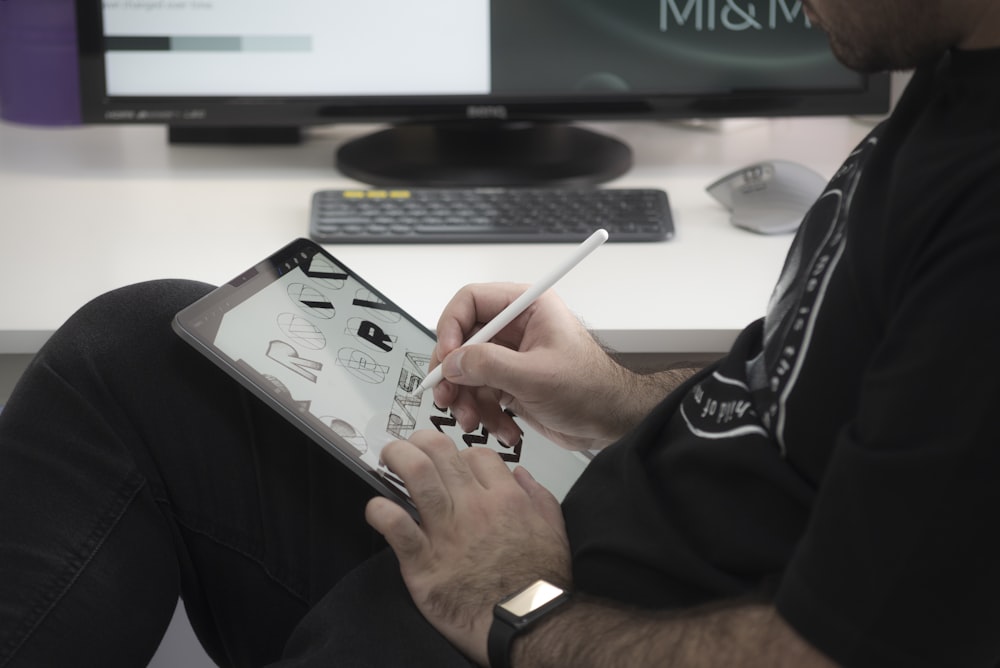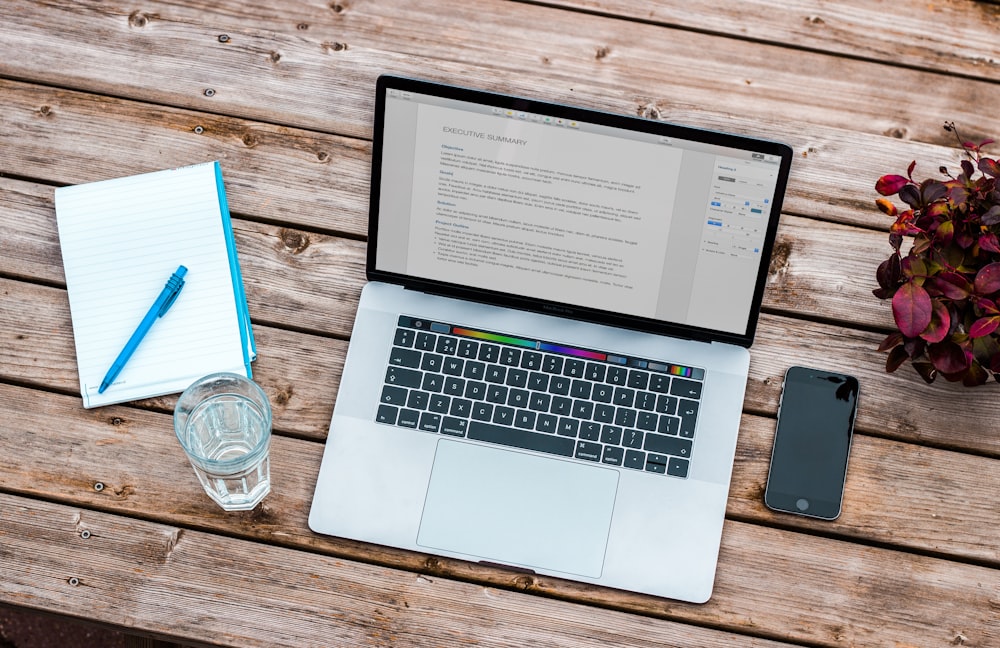Digital Business Card: Benefits And How To Make One

Photo by Editorial Team
A business card will always be necessary, even as the world has shifted from print media to digital. A business card is one of the first things you hand out when meeting someone new, and it offers an introduction to who you are and what your business is about. Thus, they're one of the essential tools in your marketing arsenal.
Read more: How Technology Is Transforming Business
As a reminder of today's world, where technology is ever-changing, it's time to step up your game and get with the times. It's not enough to have a printed business card; you need a digital one. Moreover, it's easy to determine why you need one—it brings a new level of professionalism and credibility to your marketing.
Digital business cards are electronic business cards representing your physical card. They have the same information as your physical business card. Instead of being printed on paper and put into a wallet, they're saved electronically as a virtual contact file (.vcf), image file, or quick-response (QR) code.
However, they can do some other things that physical cards cannot. The benefits will be explained in more detail in this article.
Benefits Of Digital Business Card
Digital business cards have many benefits that make them worth using. These include:
(1) Easy To Share And Distribute
The main benefit of using digital business cards is that they are easier to share. There are multiple ways you can share your digital business card: through a QR code, a near-field communication (NFC) tag, email, or text. Your contact can save it directly on their computer or phone. This makes it much more straightforward than giving a physical card, which they might lose.
(2) You Can Access Them Anywhere
Another benefit of using digital business cards is that you can access them anywhere. You don't have to worry about taking physical cards with you everywhere, as they'll be on your phone. Thus, if you encounter someone you'd like to network with, you can easily give them your contact information through your digital business card.

Furthermore, the recipient of your digital business card won't worry about losing them either. Should they need to contact you anytime soon, your information is readily available on their phone or computer.
(3) It Saves You Money
Whether you use a digital or physical business card, you will have to pay the design fee. However, with a physical business card, you will incur additional costs from printing. You'll have to print a new batch again if you run out of physical cards. Digital business cards can be distributed to an unlimited number of people, thus saving you money in the long run.
Supplementary reading: Digital Transformation: Escape From The Poverty Trap?
(4) They Are Used For Digital Marketing
Digital business cards are great for digital marketing purposes. With the world becoming increasingly online, you're bound to create valuable connections through the internet. In this case, sharing a digital business card is highly advantageous for you to share important information about yourself, your business, or your services.
(5) Convenient And Easy To Carry Around
Digital business cards are convenient and easy to carry around. They don't require extra space in your wallet or purse, so you can always keep your hands free. This makes them perfect for people who work in a fast-paced environment where they need their hands free at all times.
(6) They Are Easier To Update
Digital business cards are easier to update than physical ones. You only have to edit the text or change information on your computer, and you're done. You can also opt to create a new QR code. Unlike physical business cards, you don't need to print out new cards whenever you need to update or change your information.
(7) They Are Environmentally Friendly
Digital business cards are generally better for the environment. You don't have to waste paper or ink when you can store all of your information in a digital format. This reduces your carbon footprint and helps decrease waste caused by printing or throwing out outdated business cards.
Explore this: Going Paperless: What’s The Hype?
(8) They Are More Secure
Digital business cards are more secure than physical ones. People can quickly lose your business card, which might go into the hands of someone you don’t want to share your information with. If you’re using a QR code for your digital business card, you can be more selective with whom you share it.
(9) They Are Technologically Advanced
Digital business cards are technologically advanced. They can include links to your website, social media accounts, and more. You can also add video, audio, and multimedia files to your card, and with the help of AI edit video tools, you can effortlessly enhance and customise your content. This makes it much easier for people to learn more about you and your business when they click on a link or scan a QR code than if they were to just look at your physical card.

That said, digital business cards are an excellent addition to your marketing strategy and a way to get more out of your marketing efforts. They’re a convenient option for networking that allows you to share your information seamlessly through your phone.
How To Make A Digital Business Card
Digital business cards are easy to create, and you can find many free business card templates online that make the process even easier. However, you must know what you need before creating your digital business card. These include:
i. Use A Computer
You'll need a digital device that can create your business card. You can use your desktop computer, a laptop, or other devices such as smartphones and tablets for as long as they can run the software required to make your digital business card. One such software is Uniqode's Digital Business Card, which allows you to create a free one.
ii. Make Use Of A Design Program
You'll need to have a design program for your digital business card. You can take advantage of free online software to design your card like, for example, Wepik business card creator which has many templates ready for use.
Be sure to create an account with the website or software on which you’re making your digital business card, as this will allow you to edit details later on. Furthermore, you can also create new business cards for anyone on your team in your account.

iii. Put Your Logo
If you have a business or personal logo, be sure to include it in your digital business card. A logo represents your business and makes you easily accessible to new clients or customers. You can input your logo by uploading it on the software you use, which will reflect on your business card along with your information.
This may interest you: 7 Reflections to Demystify Personal Branding
iv. Include All Relevant Information
Once you've uploaded your logo, all that’s left to do is to fill in all pertinent information on your business card. This includes your name or business name, phone number, email, business address, and social media accounts.
Feel free to include other information that might be useful to people interested in working with you. For example, if you have an online portfolio or website where people can access your work or products, it's best to include this information.

v. Save And Download
Once you've filled in all the information, it's time to save and download your business card. Depending on the file format you’re aiming for, it can be as simple as downloading an image file, a .vcf file, or a copy of your QR code. However, you’re free to have multiple file formats of your digital business card, as the people you network with may have their preferences.
Now that you have the perfect business card, all that's left is to get out there and start networking.
Conclusion
Having a business card is an integral part of networking. It allows you to introduce yourself to valuable business connections and acquaint prospective clients and customers with your business.
Digital business cards allow you to spread the word about yourself and your business seamlessly without spending additional costs for printing. It’s also easy to share with people, whether you meet them in person or online. As the world becomes increasingly online, having a digital business card will give the impression that you are up-to-date with the latest technologies.
Be sure to check out the media below:
Leaderonomics.com is an advertisement-free website. Your continuous support and trust in us allow us to curate, deliver and upkeep the maintenance of our website. When you support us, you enable millions to continue reading for free on our website. Will you give it today? Click here to support us.
Business
Tags: Consultant Corner, Marketing
Sarah Thompson is a digital marketing professional. She’s worked with numerous companies in different fields for over 15 years. She helps businesses grow their reach, know their target audience, and increase profits. In her free time, Sarah enjoys blogging about her experience in the marketing industry and sharing her knowledge with others.






